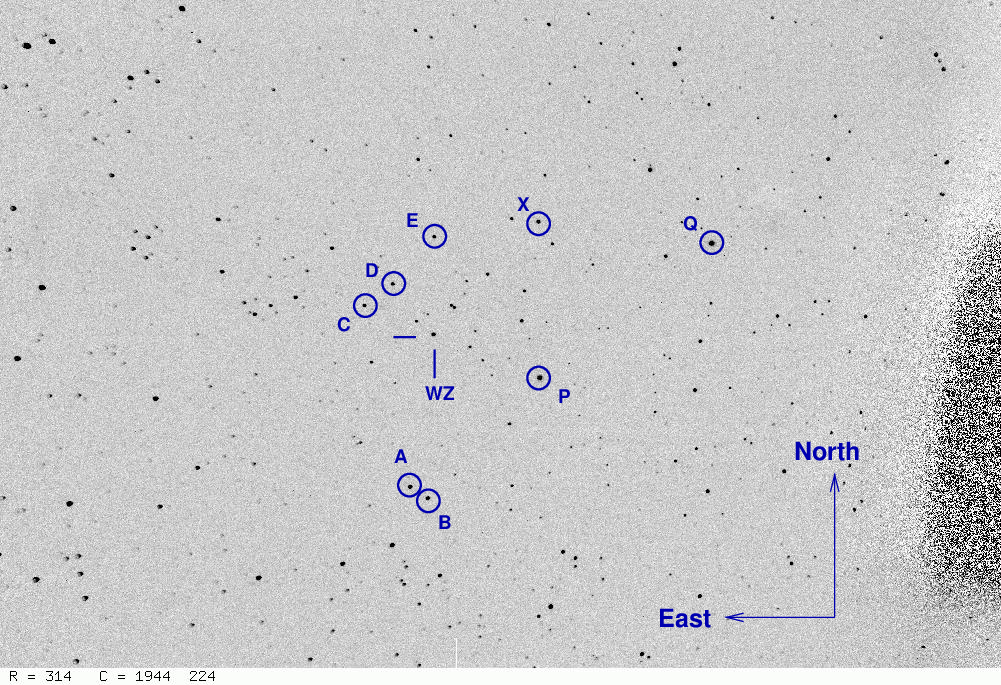
On the night of Oct 19/20, 2021, under fair conditions, Nititee Lertviwatkul and I acquired images of the eclipsing binary systems WZ Cyg and V445 Cas as part of capstone projects.
The bright, nearly full Moon caused the sky to be bright and added a gradient to our images, so the measurements from tonight have a somewhat lower signal-to-noise ratio than usual.
The main setup was:
Notes from the night:
The object is located at
RA = 20:53:06.78 Dec = +38 49 40.7 (J2000)
A chart of the field is shown below. The size of the chart is about 31 x 26 arcminutes.

I've marked the location of several comparison stars as well. The bright star P is the ninth-magnitude HD 198975.
I'll use star "A" to shift my instrumental magnitudes to the V-band scale.
I took a photo of the finder TV's screen when pointing to this target; this could be a useful reference for the future:
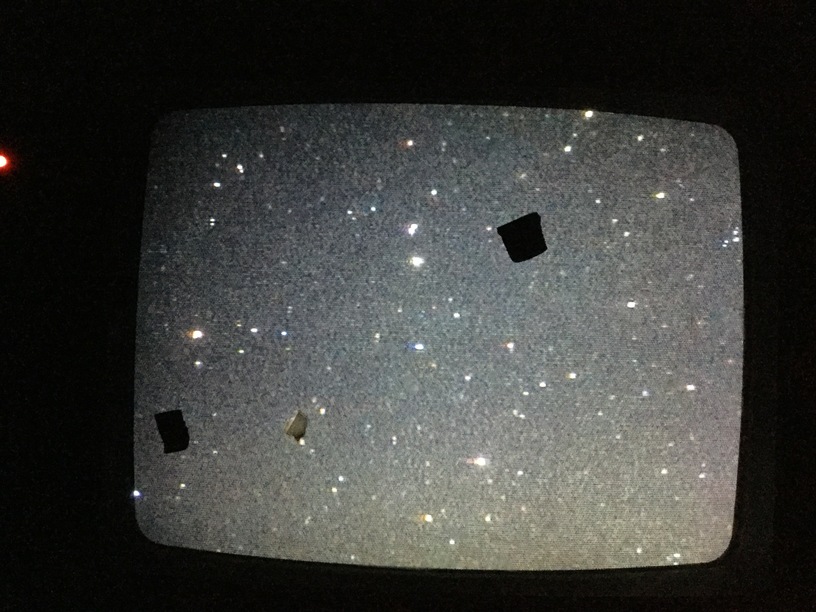
The sky value shows no significant clouds; the two dips are due to mistakes in the dome slit position.

The FWHM graph below shows quite a rise as the temperature dropped, until I re-set the focus.
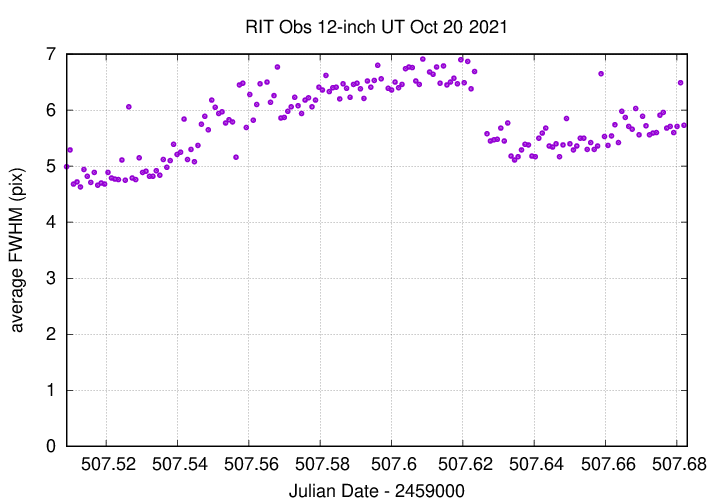
Using aperture photometry with a radius of 10 (not 7) pixels in B and V filters (binned 2x2, each pixel is 1.24 arcsec, so a radius of 12.4 arcsec), I measured the instrumental magnitudes of a number of reference stars and the target. Following the procedures outlined by Kent Honeycutt's article on inhomogeneous ensemble photometry, I used all stars available in each image to define a reference frame, and measured each star against this frame.
Sigma-vs-mag plots show that the floor was about 0.010 mag.
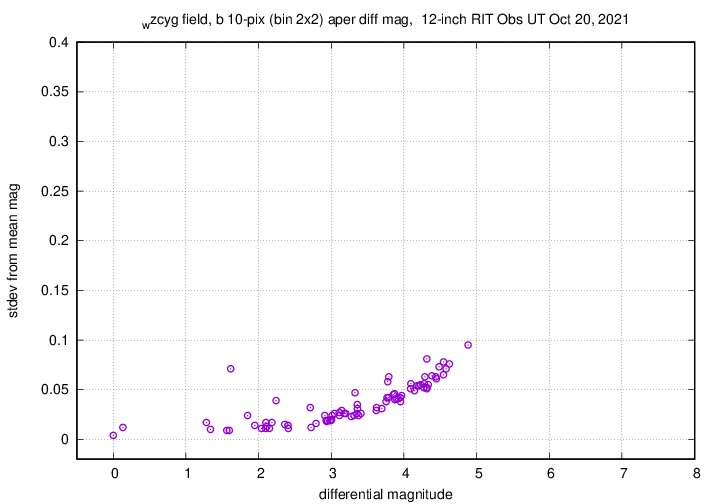
The change in zeropoint was largely driven by airmass, aside from the two dome errors.

The object is located at
RA = 00:31:39.65 Dec = +53:13:00.3 (J2000)
A chart of the field is shown below. The size of the chart is about 31 x 26 arcminutes.
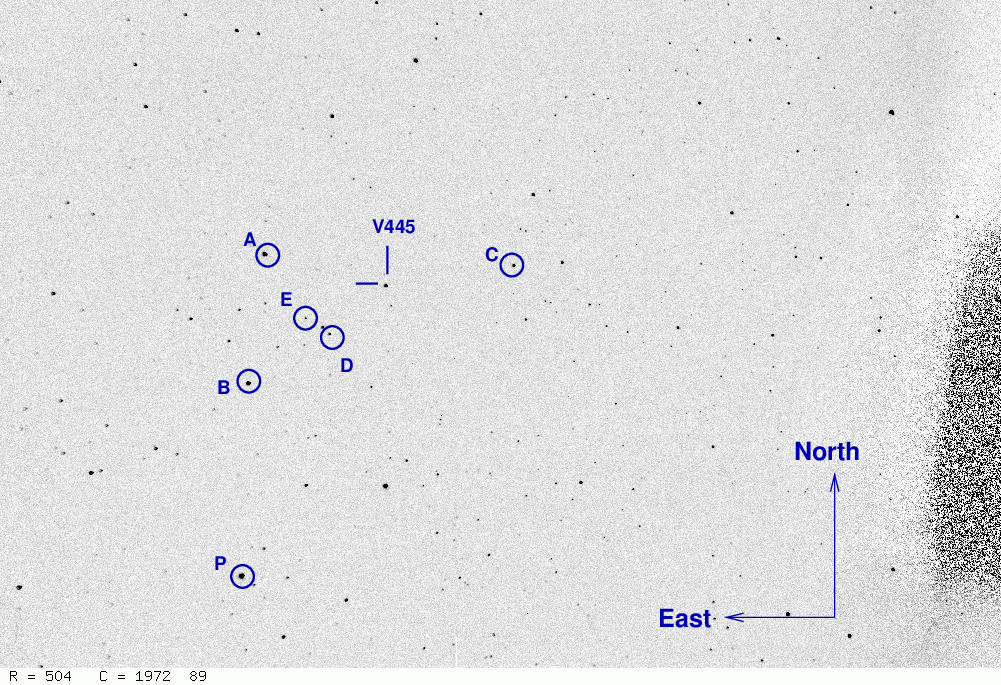
I've marked the location of several comparison stars as well. The bright star P is the ninth-magnitude HD 2826.
I'll use star "A" to shift my instrumental magnitudes to the B and V-band scales (and pretend that tonight's R-band images have the same V-band calibation)
I took a photo of the finder TV's screen when pointing to this target; this could be a useful reference for the future:
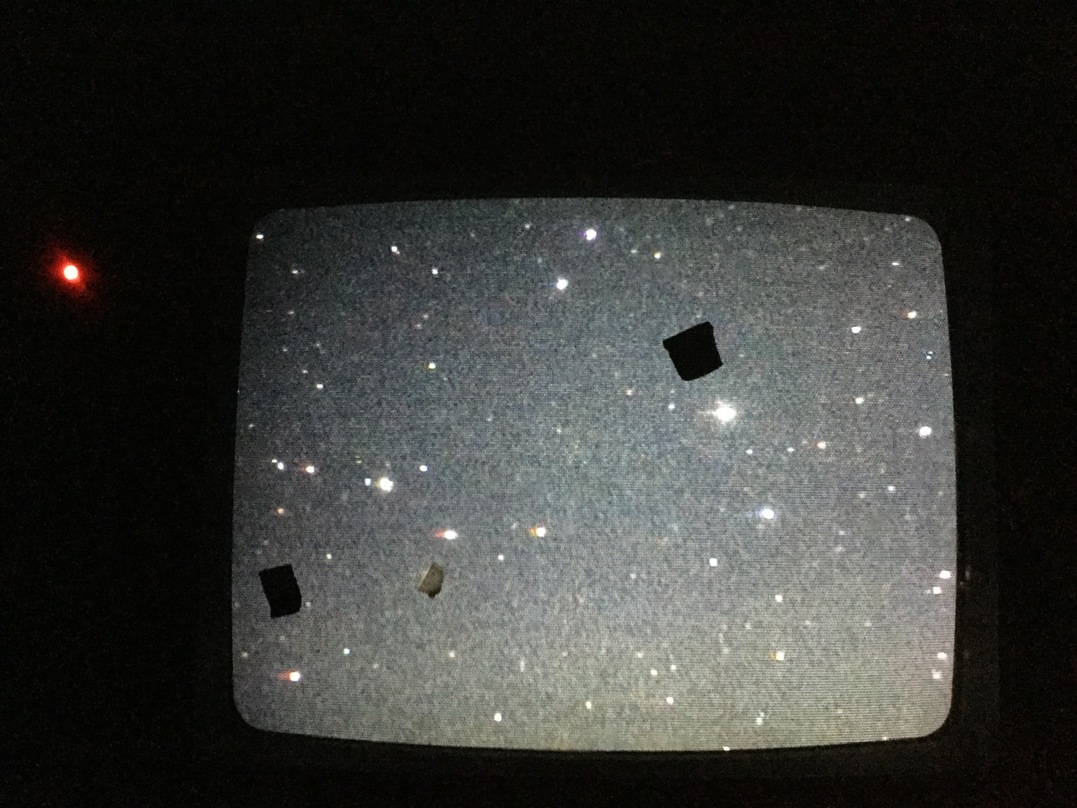
The sky value shows two brief clouds, then a bunch at the end of the night.
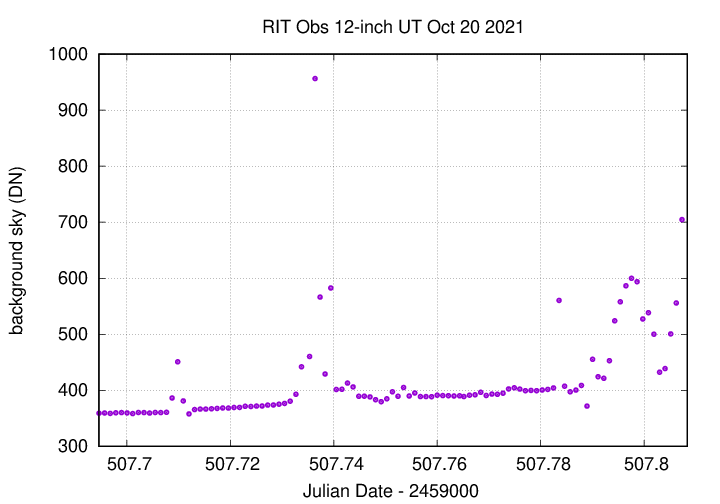
The FWHM graph below shows a slight increase as the temperature dropped.

Using aperture photometry with a radius of 10 pixels in B and R filters (binned 2x2, each pixel is 1.24 arcsec, so a radius of 12.4 arcsec), I measured the instrumental magnitudes of a number of reference stars and the target. Following the procedures outlined by Kent Honeycutt's article on inhomogeneous ensemble photometry, I used all stars available in each image to define a reference frame, and measured each star against this frame.
Sigma-vs-mag plots show that the floor was about 0.006 mag.
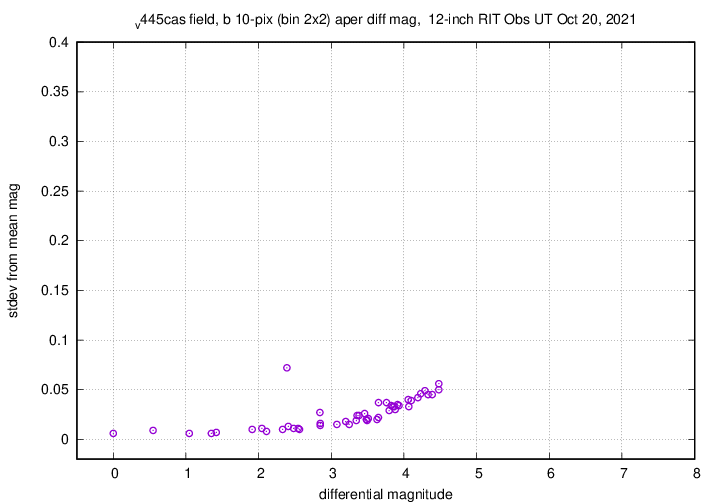
The change in zeropoint shows the evidence for clouds coming and going.
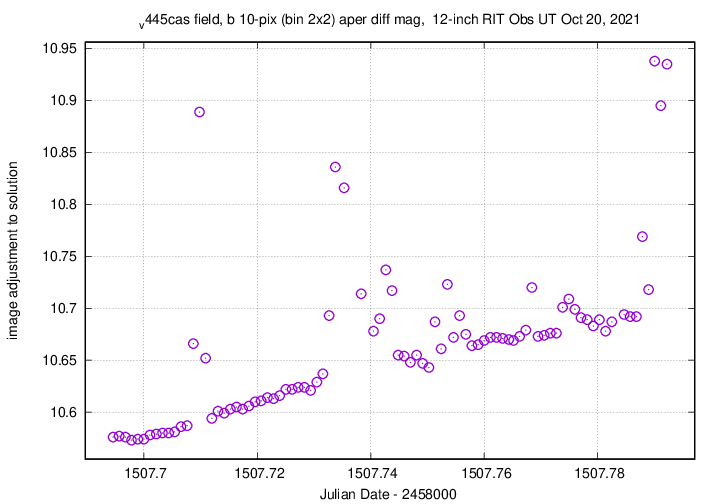
Last modified 10/20/2021 by MWR.